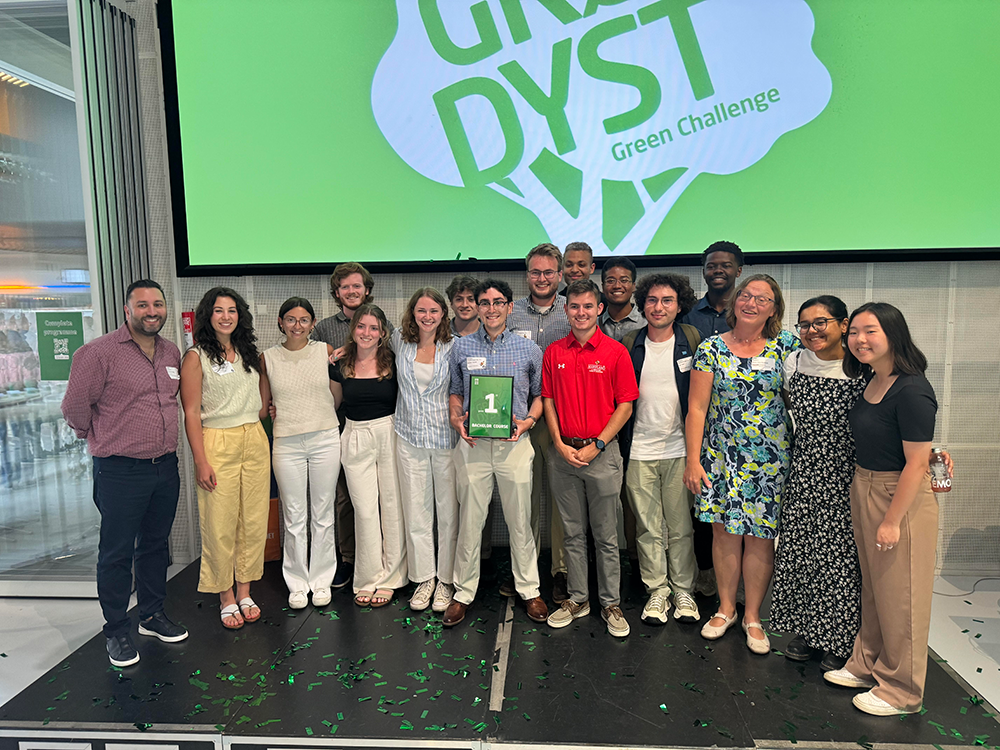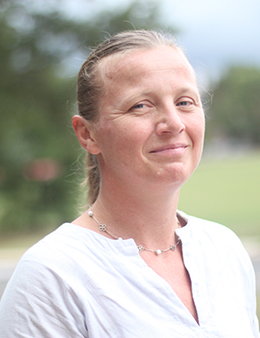
|
 |
Four UMD teams participated in this year’s competition, having prepared for it during the spring semester as part of the Green Global Challenge course, which combines a regular three-credit course experience with a study abroad component. |
|
A team of University of Maryland (UMD) students won a top prize at the Grøn Dyst (Green Challenge) competition hosted this summer by the Danish Technical University (DTU).
It is the second year in a row that UMD has sent students to Copenhagen for the competition through a partnership between the UMD Department of Civil and Environmental Engineering and the Office of Global Engineering Leadership at the university’s A. James Clark School of Engineering.
UMD CEE students Madison DeVane, Nathan Jacobs, and Robert Mayo, who enrolled in Professor Birthe V. Kjellerup’s Green Global Challenge course during spring 2024, received first place in the bachelor’s-level category for a proposal that will help reduce the number of birds killed each year during collisions with wind turbine blades, and thus also minimizing the downtime needed for repairs. The award comes with a cash prize of 30,000 Danish kroner, equivalent to about $4,300.
Around one million birds die each year by flying into the turbines, mainly because of a phenomenon known as “motion smear.” When turbine blades spin at high speeds, the eye loses the ability to perceive them correctly. Avians fly into what appears to be empty space, only to be killed by the spinning blades.

Professor Birthe V. Kjellerup, Department of Civil and Envirornmental Engineering,
In addition to decimating bird populations, such collisions also damage the wind turbines, which must then be taken offline for repair. Being able to minimize or eliminate such downtime is important to ensurinhg a stable green energy supply.
Working with Kjellerup, the UMD students' proposed using ultraviolet (UV) paint to add a pattern of thin, staggered stripes to the front and back of one of the three blades used in a turbine. The resulting pattern appears vibrant to birds, which can register UV frequencies, yet invisible to humans.
"What I found most valuable about our experience is the undeniable proof that a team's collective capability far surpasses that of any individual,” said Nathan Jacobs. “Madison, Robert, and I each have unique backgrounds and perspectives which were all crucial in developing our project."
"Originally, we knew that we wanted to somehow improve upon the existing wind energy sector, but only reached our final solution through collective brainstorming and lots of critical discussion. It was inspiring to see how the pooling of our diverse ideas and mutual support for one another led to outcomes none of us could have achieved alone," Jacobs said.
In all, four UMD teams participated in this year’s competition, having prepared for it during the spring semester as part of the Green Global Challenge course, which combines a regular three-credit course experience with a study abroad component.
Conceived of and taught by Kjellerup, who is also chair of the CEE department’s Diversity, Equity, and Inclusion Committee, the course is intended to familiarize students with engineering and sustainability issues in northern Europe, and to provide hands-on experience with developing projects in an international design competition setting, as represented by the Denmark-based event.
"It’s a chance for students to become acclimated to a rigorous professional engineering environment in a global context," Kjellerup said.
Related Articles:
For Engineering Students, A New Way to Build Global Experience
Engineering Sustainable Solutions…Globally!
Clark School Students Invited to Apply for Summer Engineering Courses in Czech Republic, Italy
Clark School Students Study Urban Infrastructure in Turin, Italy
August 26, 2024
|

